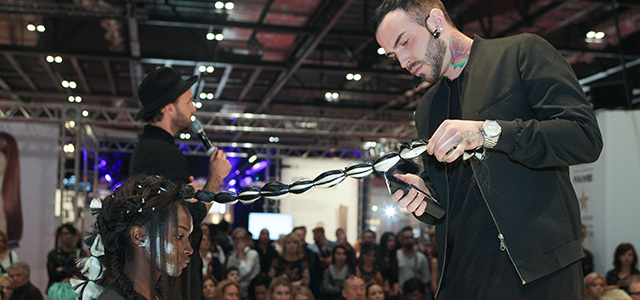The blonde code: your foolproof guide from balayage to babylights
Published
02nd Feb 2016
by maryforester

 Image: David Fisher/REX Shutterstock
With consumer magazines bursting with the latest techniques make sure you're up to date with all the current terms.
Affinage Global Brand Ambassador, Tracey Devine explains the finer details of popular colour techniques.
Balayage
Roots are stretched using a deeper base shade and the ends lifted to a lighter shade, hand painted to create a marble effect.
Babylights
Threadlike highlights which are ultra fine and soft in tone to look sunkissed.
Contouring
Adding areas of depth or light to increase tone and shine to a specific area of the hair. This can be handpainted or foiled.
Highlights
Sections of hair are woven and coloured from darker to lighter using foil or méche for a subtle or bolder lift.
Lowlights
The opposite of highlights with hair taken from lighter to darker using foil or méche woven sections.
Ombré
darker at the roots and through the mid-lengths with a gradual to intense lightening from the mid-lengths to ends.
Root Stretch
Roots are coloured slightly lower than the regrowth to give the illusion of a heavier root area.
Smudging
Two or three colours of a similar tone are applied and smudged together to create softer versions of the original shade. The colour can vary from darker to up to three shades lighter when smudging. generally this would be from root to mid-band and achieves very subtle results.
Stretched Roots
Colour is applied to give a deliberate grown out feel.
Strobing
Very similar to a technique called pixilation. Areas of colour are hand-picked and bleached in a pattern; colour's then reapplied to certain pieces in many tons to create a strobing effect. This technique is particularly nice when hair is moving in a summer breeze.
Image: David Fisher/REX Shutterstock
With consumer magazines bursting with the latest techniques make sure you're up to date with all the current terms.
Affinage Global Brand Ambassador, Tracey Devine explains the finer details of popular colour techniques.
Balayage
Roots are stretched using a deeper base shade and the ends lifted to a lighter shade, hand painted to create a marble effect.
Babylights
Threadlike highlights which are ultra fine and soft in tone to look sunkissed.
Contouring
Adding areas of depth or light to increase tone and shine to a specific area of the hair. This can be handpainted or foiled.
Highlights
Sections of hair are woven and coloured from darker to lighter using foil or méche for a subtle or bolder lift.
Lowlights
The opposite of highlights with hair taken from lighter to darker using foil or méche woven sections.
Ombré
darker at the roots and through the mid-lengths with a gradual to intense lightening from the mid-lengths to ends.
Root Stretch
Roots are coloured slightly lower than the regrowth to give the illusion of a heavier root area.
Smudging
Two or three colours of a similar tone are applied and smudged together to create softer versions of the original shade. The colour can vary from darker to up to three shades lighter when smudging. generally this would be from root to mid-band and achieves very subtle results.
Stretched Roots
Colour is applied to give a deliberate grown out feel.
Strobing
Very similar to a technique called pixilation. Areas of colour are hand-picked and bleached in a pattern; colour's then reapplied to certain pieces in many tons to create a strobing effect. This technique is particularly nice when hair is moving in a summer breeze.

